The Department of Languages, Cultures and Visual Studies (LCVS) at the University of Exeter recently hosted an extraordinary event, the PGR Conference – Visions Unveiled: Unfolding Narratives of Art History, Visual Culture, and Modern Languages. Held on June 14, 2024, this inspiring gathering was more than an academic conference; it was a vibrant celebration of interdisciplinary research, cultural dialogues, and creative exploration.
With 32 captivating talks spread across 9 meticulously structured panels, attendees were treated to an in-depth exploration of contemporary research. Organised by PhD students Jo Sutherst, Katy Humberstone, and Dave Weller, the conference embraced a hybrid model, ensuring inclusivity with both in-person and online presentations.
Keynote Highlight: Dr. Jennifer Eddy’s Inspirational Address
The keynote speech by Dr. Jennifer Eddy, an Associate Professor of World Language Education at Queens College, City University of New York, was a definitive highlight. Dr. Eddy’s address was a masterclass in integrating creative methodologies in language learning and visual literacy. She passionately advocated for a curriculum that extends beyond traditional textbook learning, leveraging the power of art, drama, film, and theatre.
Key Takeaways from Dr. Jennifer Eddy’s Keynote: (Re) Vision by Design: Unfolding Creativity for Transcultural Communicative Competence
- Creative Integration in Language Learning:
- Dr. Eddy emphasised creativity over perfection, highlighting how overarching themes, values, and beliefs recur across various texts, thereby enriching the learning experience.
- Her program advocates viewing teachers as designers and learners as mediators who can convey cultural nuances even with limited language proficiency.
- Intercultural Communicative Competence:
- She presented a curriculum focused on intercultural communicative competence, emphasising skill-based and task-based approaches.
- Dr Eddy’s exemplars demonstrated tasks designed for different levels of learner engagement, covering diverse cultural contexts from Yoruba wedding celebrations to LGBTQ+ diversity in French-speaking countries.
- Task Design and Visual Literacy:
- Using aesthetic education principles from Maxine Greene and Lincoln Center Institute, Jennifer reinforced that imagination is crucial for understanding through the arts.
- Her approach encourages students to engage with art thoroughly, promoting multiple perspectives and deep cultural connections.
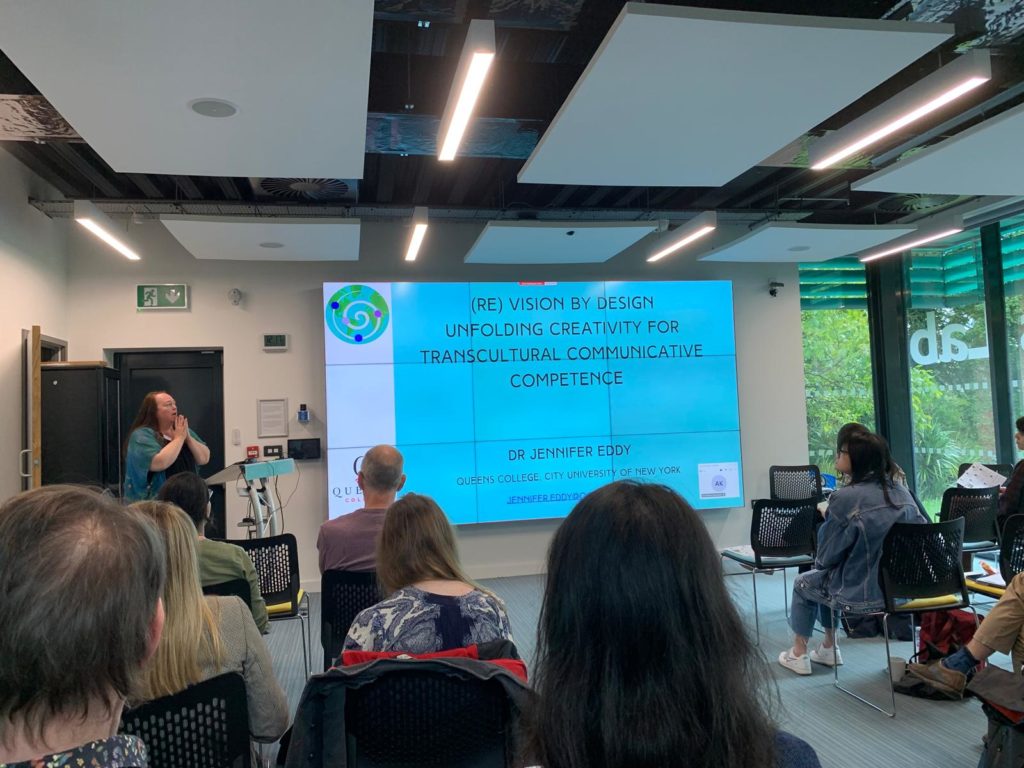
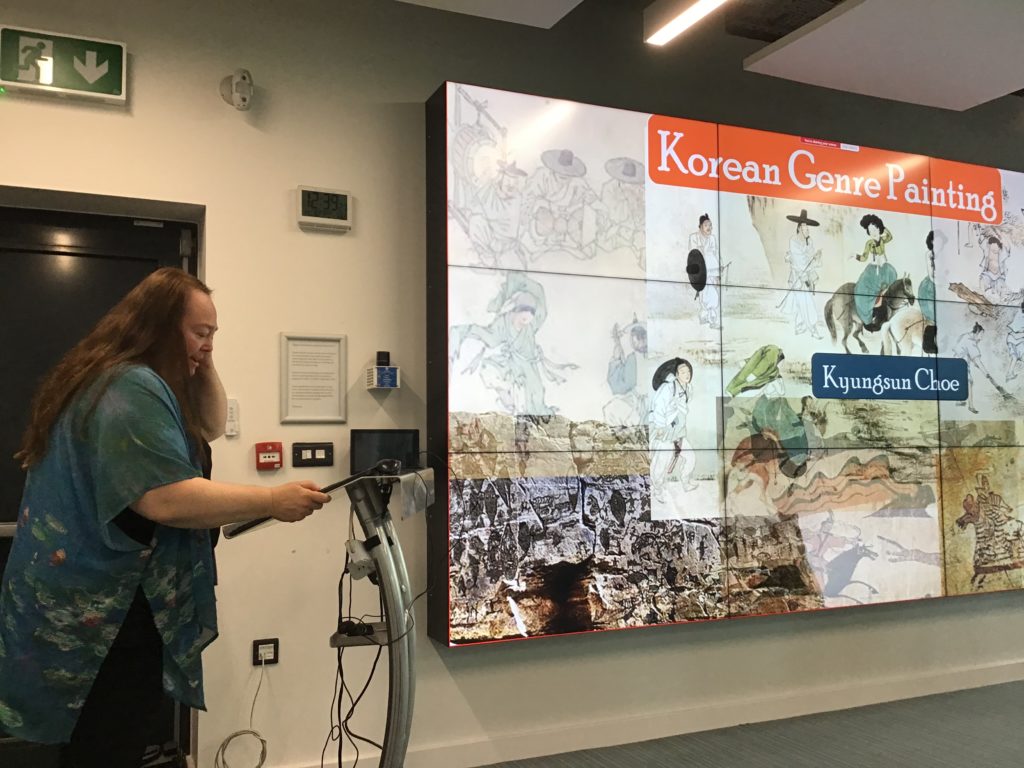
Panel Summaries
Panel 1a – Translations: Word, Image, and Performance
- Suzanne Eade Roberts – What is Translation, Anyway? Two Soviet ‘General Theories’ of Translation, With and Without Machine Translation
- Suzanne is a final-year PhD student with the South, West, and Wales Doctoral Partnership based at the University of Bristol and University of Exeter, specialising in translation studies, Suzanne explored two general theories of translation from the Soviet Union during the 1950s and 1960s. She compared the work of Andrei Fedorov and Isaak Revzin paired with Viktor Rozentsveig, focusing on the shift towards machine translation. She highlighted the importance of understanding earlier works in translation theories and discussed the impact of political contexts on translation methodologies.
- Ying Zhang – Translating Chinese Internet Literature Across Media: (Re)construction of Chinese Fantasy in Fandom
- Ying is a PGR student in Translation Studies at the University of Exeter. Ying examined transmedia storytelling within the genre of Chinese internet literature, particularly focusing on fantasy genres like Xianxia and Xuanhuan. Ying discussed the role of fan translation in the global dissemination of Chinese web novels and TV dramas, raising points about the integration of fan cultures in both human and machine-assisted translations. Ying’s work emphasised the interaction between official and fan translations and how transmedia ecosystems influence cultural knowledge dissemination.
- Helena Anderson – Gwen John: The Artist as Translator
- Helena is an AHRC Collaborative Doctoral Partnership student with the University of Bristol and Amgueddfa Cymru-Museum Wales. She presented on the artist Gwen John and her dual engagement in visual and linguistic practices. She introduced the concept of feminist translation as a frame for understanding John’s work. Helena argued that theories of translation, such as those of cultural and biotic translation, can open up new readings of an artist’s intention, practice, and identity, particularly through the lens of gender and the continuous process of meaning-making.
- Howard Gayton – Performance Lecture: Crossing Borders and Barriers with Ophaboom Theatre; or “How I Learnt to Speak French”
- Howard was the co-artistic director of Ophaboom Theatre, the UK’s foremost Commedia Dell’Arte company, which toured extensively across the UK and Europe from 1990 to 2007. He is currently co-artistic director of Columbina Theatre Company with playwright Peter Oswald. He is also a final year PhD Candidate at the University of Exeter. Bringing a unique angle to the panel, Howard presented a performance lecture where he shared his experience of learning French through the performance of Commedia dell’Arte across Europe. He emphasised the role of play, immersion, and physicality in language acquisition. Howard illustrated how their theatre performances, often multilingual, facilitated a deeper engagement with different cultures and languages, embodying the linguistic vitality and improvisational spirit of Commedia dell’Arte.
Panel 1b – Orientations: The Global and Local in Performance, Language, and Visual-Material Culture
- Dr. Alina Kamalova – Unfolding Narratives of Globalization and Elitism: The Analysis of English-written Neon Signs in Kazakhstani Coffee Shops
- Dr. Alina Kamalova is a Lecturer in Sociolinguistics at Suleyman Demirel University. She earned her Ph.D. in Sociolinguistics from the University of Edinburgh. Alina examined the role of neon signs in Kazakhstan’s coffee shops as markers of globalisation and neoliberalism. She highlighted how these signs are used to construct notions of elite identity and cosmopolitanism within the local context, particularly through resemantisation in social media and public consumption spaces.
- Katy Humberstone – The Transcultural and the Local: Multivocal Heritage in the Context of Historical Cornish-Mexican Migration
- Katy is a third-year PhD candidate in the Department of Languages, Cultures, and Visual Studies at the University of Exeter, and co-supervised with the University of Southampton. Her research is supported by the South, West, and Wales Doctoral Partnership. Katy focused on the semiotic landscapes of Cornish heritage in Mexico, particularly in the mining towns of Pachuca and Real del Monte. She explored how local businesses use historical and cultural symbols in their branding to connect with Cornwall’s mining legacy while also adapting to local Mexican identities.
- Pankhuri Singh – Reimagining the Bard: A Journey through Vishal Bhardwaj’s Shakespeare’s Trilogy
- Pankhuri is a final year PhD student in the Department of English, University of Exeter. Pankhuri examined how Indian filmmaker Vishal Bhardwaj reimagined Shakespeare’s plays (Macbeth, Othello, and Hamlet) into contemporary Indian settings. She highlighted the transformation of Macbeth into “Maqbool”, focusing on the adaptation of witches and supernatural elements into corrupt police officers and the use of cultural symbols like the Navamsam chart.
- Ying Huang – The Role of Sino-Arab Film Collaboration on Cultural Diplomacy during the ‘Seventeen Years’
- Ying, a PhD student in Modern Languages and Cultures at the University of Exeter, explored the significance of Sino-Arab film weeks held in the 1950s and 60s as tools for cultural diplomacy and anti-colonialism. She emphasised the role of non-state actors and the continuous exchange of cultural artefacts—as part of people’s diplomacy—between China and Arab nations, reflecting a common goal of nation-building and solidarity against Western dominance.
Panel 2a – Art, Language, and Representation
- Amy Wraith – The Imagined Lover: Queer Desire in the Interior Spaces of Ethel Sands and Dorothy Hepworth
- Amy is an early career researcher in 20th century art. Graduated in 2023 from the Courtauld Institute of Art with a Master of Arts degree. Amy explored the use of interior spaces and their association with self-expression and individualism by two queer female artists of the early 20th century, Ethel Sands and Dorothy Hepworth. She discussed how these artists subtly used the interior space to depict their desires and intimate relationships, discussing Sands’ partnership with Nan Hudson and Hepworth’s relationship with Patricia Preece. The emphasis was on how the material objects in domestic spaces reflect and protect their private lives.
- Chigozirim Nwaosu – The Lesbian Identity: A Transgressive Representation
- Chigozirim is a PhD student at the University of Surrey. She focused on the intersectionality of race, gender, and sexuality from an African perspective, using Diriye Osman’s short story “Ndambi” to highlight the experiences of a Somali lesbian woman named Samira. She discussed how cultural and religious interpretations cast lesbian identity as transgressive within many African societies, creating a vivid portrayal of Samira’s struggles with homophobia and societal rejection. Chigozirim’s work delves into literature to reveal the pervasive impact of oppressive cultural norms and explores means of resistance and identity formation.
- Cecilia Rose – John William Waterhouse: Secrets Unveiled
- Cecilia is third year PhD student in the department of Art History and Visual Culture at the University of Exeter. Cecilia provided insights on John William Waterhouse and exploring the Occult. She delved into the lesser-known fascination of Victorian artist John William Waterhouse with the occult, suggesting that his elusive character and lack of personal documentation may indicate a secret life associated with the Hermetic Order of the Golden Dawn. She identified occult symbols and themes in his artworks, such as the use of the number seven and the depiction of sorcerers, offering a new dimension to understanding his paintings. She drew connections between his artworks and the esoteric symbolism of the Golden Dawn, providing compelling evidence for his involvement in the order.
- Amanda Holiday – Black Ekphrasis & the Wilde Woman of Aiken
- Amanda is a doctoral candidate at the University of Brighton. Amanda spoke on Poetry, Race, and Art, Exploring the Black Lyric ‘I’. Amanda’s talk highlighted the response of black poets to visual art, focusing on the poem “Wilde Woman of Aiken” by Robin Coste Lewis., inspired by a photograph from 1882. She examined the intersection of race and representation, showing how the photograph and poem interweave to challenge historical invisibility and subservience, using the voice of a sunflower as a metaphor. Amanda’s presentation bridged visual art and poetry, demonstrating the powerful interplay between these mediums in expressing black identity and historical consciousness.
Panel 2b – Visual Methods, Approaches, and Considerations
- Alanis Whitmore – Exploring Methods in Visual Anthropology: Unveiling Humanness Through Observing Kichwa Communities in Amazonian Ecuador
- Alanis, a research engagement officer at the University of Exeter, shared her experiences during a field trip to Amazonian Ecuador, where she engaged with the Kichwa community. She utilised visual methods like drawing, sketching, photography, and video clips to capture the lives and experiences of the indigenous people. Due to language barriers, Alanis relied on non-verbal visual methods to document the cultural and human aspects of the community. Her aim was to explore how these artistic methods could complement traditional ethnographic research and enhance the communication of human experiences.
- Rachata Sasnanand – From Muybridge to Spielberg: Photographic Ontology in the Digital Age
- Rachata, a PhD candidate in Film Studies at King’s College London, examined the evolution of photographic ontology from its classical roots to its present challenges posed by digital imaging technologies like CGI and AI. He traced the history from Eadweard Muybridge’s early motion studies to the complex digital manipulations in contemporary cinema, using examples like Spielberg’s “Jurassic Park”. Rachata argued for a broader understanding of photographic ontology that includes both traditional indexical models and new perceptual reality models, showing how digital images can still produce a convincing sense of reality despite their lack of direct correlation to real-world events.
- Jo Sutherst – The Paradox of Authenticity: Navigating the Intersection of Art, Identity, and Social Media in Leah Schrager’s Practice
- Jo, a part-time PhD student at the University of Exeter, explored the concept of authenticity in the digital age through the case study of artist Leah Schrager. Schrager’s work blends visual art and performance, challenging traditional notions of authenticity by creating and manipulating digital personas on social media. Jo discussed how Schrager’s images and personas, including the Instagram model “Ona”, reflect and critique the performative and commodified nature of online identity. She emphasised the complexity and paradoxical nature of authenticity in Schrager’s work, where genuine self-expression coexists with deliberate artifice and self-exploitation.
Panel 3a – Identity across Linguistic and Visual Boundaries
- Pu Meng – Crossing Boundaries: Translating Chinese Visual Art into Western Contexts—Linguistic, Cultural, and Visual Challenges
- Pu from George Mason University’s English department discussed the intricacies of translating Chinese verbal art for Western audiences. Pu examined how linguistic cultures and rural elements affect the interpretation and appreciation of Chinese art in the West. Key points included the complexities of translating cultural symbols, adapting artistic aesthetics, and ensuring holistic interpretations. Pu’s methodology involved qualitative analysis through exhibition catalogues, interviews with curators and exhibition designers, and visitor feedback.
- Sahithi Kalyanam – Inscriptions of Identity: Telugu, English and French Inscriptions in Company Paintings of Thanjavur and Trichinopoly
- Sahithi is an independent art historian and researcher with a Master’s Degree in History of Art and Archaeology from SOAS, University of London. She focused on inscriptions in company paintings from southern India. These paintings, made for the British East India Company, feature English, French, and Telugu inscriptions. Sahithi highlighted how these inscriptions served as acts of resistance and cultural identity assertion for Telugu artists. She also discussed how the medium of company paintings bridged Western and Indian audiences.
- Dr. Márton Orosz – György Kepes: Interthinking Art + Science
- Dr. Márton Orosz serves as the founding Curator of the Collection of Photography and Media Arts at the Museum of Fine Arts in Budapest, Hungary. Since 2014, he has held the position of Director at the museum dedicated to Victor Vasarely, which is part of the same institution. Márton presented on the Hungarian-born artist György Kepes. Kepes’ contributions to light art and his interdisciplinary approach were emphasised. His works often integrated light as a creative medium, spanning architectural designs, kinetic installations, and urban landscapes. Márton outlined Kepes’ extensive research and ambitious projects, showcasing their lasting impact on modern art.
- Joshua Taylor – An Exploration of the Contribution of Linguistic Diversity to National Identity in Educational Contexts: The Journey So Far
- Joshua, a second-year PhD student at the University of Exeter, explored the impact of multilingualism on national identity within educational contexts. Joshua’s research centred on a Welsh medium secondary school in Cardiff, analysing how linguistic diversity influences students’ national identity. Joshua’s methodology included student and teacher questionnaires, focus groups, and teaching observations. Joshua aimed to understand the pedagogical practices and their effect on students’ perceptions.
Panel 3b – Responses to Art and Language
- Dr. Yandi Wang – Visual Narrative History: Unveiling the Story Within the Canvas
- Yandi, from the University of Exeter, examined visual storytelling within the oil paintings of Luo Zhong Li, particularly his 1980 painting “The Father”. This work marked a departure from the socialist realism of the Cultural Revolution period in China, instead capturing ordinary rural life. By analysing both formal and informal elements of the painting, Yandi illustrated how the artist navigated political pressures and censorship, such as including a pencil behind the subject’s ear to ensure his work’s acceptance. She contextualised Luo Zhong Li’s paintings amongst both Western and Chinese peers, highlighting their blend of social realism and photorealism.
- Dr. Barbara Bessac – Imaginary Museums and Visual Memory: Dynamic Art History Learning Through Crafting Atlases of Images.
- Dr. Barbara Bessac is a researcher, lecturer, artist and curator. Her PhD was a joint thesis in both art history (Université Paris Nanterre) and theatre studies (University of Warwick). Since 2023, she has been teaching at NYU London and Ithaca College London Center, UAL. Teaching at NYU London and Ithaca College London Centre, presented an innovative pedagogical approach aimed at art history students. Her ‘imaginary museum’ assignment encourages students to create collections of images across various periods and media to identify and articulate thematic connections. Drawing on André Malraux’s concept of the ‘imaginary museum’ and Aby Warburg’s “Mnemosyne Atlas”, she provided examples of how student projects enhance engagement by personalising and contextualising art historical study. This method promotes visual literacy and deeper understanding by encouraging students to actively collect, curate, and analyse artworks beyond traditional visual analysis frameworks.
- Martin Lottermoser – The Letter’s Secret: Reception Theory and Art Theory in Vermeer’s “Girl Reading a Letter at an Open Window”
- Martin studied art history, history and architecture in Dresden and Vienna and is currently a PhD student at the TU Dresden. Martin revisited Vermeer’s “Girl Reading a Letter at an Open Window.” He utilised reception theory to propose a novel interpretation of the painting, suggesting that the viewer themselves might be the author of the letter, thus engaging in an imaginative exercise. Recent restorations revealing a hidden cupid figure introduced complexities around sincerity and love, further enriching the viewer’s potential narrative involvement. Martin argued that the painting stages a vision or fantasy around love and secrecy, intertwining the viewer’s role with the artwork’s emotional and narrative dimensions.
- Tennae Maki – Objectifying Rhetoric: In Search of the Artwork without Meaning
- Tennae is a postgraduate researcher with the School of Performance and Cultural Industries at the University of Leeds. Tennae explored the concept of the art object and the potential to detach it from traditional notions of authorship. Considering the rhetorical dynamics in this process, she examined how art, particularly in the digital age, is distributed and reinterpreted through intermediaries. Tennae focused on the distribution aspects and how meaning is transformed and perceived through collective engagement rather than solitary genius. She discussed the implications for visual rhetoric and proposed models for understanding art’s distribution as a collaborative, rather than author-centric, process.
Panel 4ai – Lightning Talks: Semantic Discoveries and Migrant Narratives
- Estefania Tamayo Pineda – Finding Meaning Where You Least Expect: The Semantic Properties of the Spanish Preposition a
- Estefanía is a first-year PhD researcher in the Modern Languages programme at the University of Exeter in collaboration with the University of the West of England (UWE Bristol). Her project is funded by the South West and Wales Doctoral Training Partnership. Estefania presented her project which investigates the semantic properties of Spanish prepositions and proposes a pedagogical model for teaching them to second language learners. She challenges the traditional view of prepositions as devoid of meaning and emphasises their semantic richness as understood through cognitive linguistics. Her research highlights prepositions’ embodied cognition, spatial representations, and metaphorical extensions. Using corpus analysis, she demonstrated how prepositions like “a” (to) convey meanings ranging from spatial destinations to metaphorical goals, aiding language learners in grasping their complex uses.
- Bede Yolland – Far From Home: Migration, Artefacts and the Imagination in Creative Practice
- Bede is a first year PhD student in Creative Writing at the University of Exeter, funded by SWWDTP. Bede discussed her creative writing project, which involves writing a historical novel set in 1930s Switzerland, focusing on characters impacted by displacement. She uses ceramics and historical artefacts to explore themes of migration and identity. Bede’s approach involves detailed research into the making and interaction with objects to create deeper, more emotionally resonant character experiences. Her work draws on her personal experiences working with displaced children and refugees, aiming to reflect the transformative potential of objects in shaping identities and storytelling.
Panel 4aii – Looking across Spatial and Architectural Boundaries
- Dr. Clara Gonçalves – Shaping from the Circle: Architecture, Music and Cosmology
- Clara, an Assistant Professor at the Faculty of Architecture at the University of Lisbon, explored the significance of circles and spheres in Western architectural and cosmologic thought. She traced the historical influence of these geometric forms from Renaissance humanists like Alberti to contemporary applications. Examining key architectural works and cosmological models, Clara illustrated how the circle and sphere have symbolised perfection, harmony, and the cosmos. She presented her own creative architectural designs inspired by this geometric fascination, incorporating principles from classic and modern sources to create imaginary “houses in the heavens,” where sections of well-known architectural plans are transformed into new spatial concepts.
- Kamyar Salavati – Building to Destroy: Towards a Pre-Modern Iranian Architectural Episteme
- Kamyar is an Architectural Theorist, Historian, and musicologist in his second year as a PhD student at the University of Exeter. Kamyar discussed a historical cultural approach in Iran where there is a tendency towards building new structures rather than renovating old ones, a practice documented by various travellers and historians. He examined different cultural, social, and philosophical reasons behind this architectural mindset, including the influence of Sufi philosophical ideas, the transient nature of life emphasised by Iranian poetry, and socio-political factors that made permanence less desirable. Kamyar expanded on the symbolic connection between the body, soil, and architecture, proposing that pre-modern Iranian buildings were seen as temporary, organic entities that return to the earth, aligning with certain existential and spiritual perspectives.
- Professor Rogério Paulo Vieira de Almeida – Juno and the Cloud: Meditations on Form, Distance and Time.
- Rogério is an Assistant Professor at the Faculty of Architecture – University of Lisbon. He is also an Architect and Researcher. Rogério discussed a method of graphical research delving into urban history and mythology. Using the context of early modern urban development in southern Portugal, he explained how primary sources and interpretive maps were used to create analytical drawings of urban spaces. Inspired by sources ranging from historical documents to Kandinsky’s analytical drawings, Rogério incorporated empirical data with theoretical interpretations to visualise the complexities of urban forms and their transformations over the centuries. His graphical conjectures aimed to represent the underlying forces and events affecting urban morphologies through visually engaging and informative illustrations.
Panel 4b – Visual Frontiers: Art Performance, Textile Narratives, and Dissident Bodies
- Marta Espiridiao – Visual Narratives for Dissident Bodies: A Transfeminist (Hi)story of Video-Art
- Independent curator and researcher Marta is currently a Ph.D. student at Liverpool John Moores University/Transart Institute. Marta discussed her research on representations of non-binary identities in video art. She focused on feminist and queer video collectives from the 1970s and 1980s, highlighting how they used video as an emancipatory tool. She emphasised the work of the French video collective Les Insoumuses and the early videos of non-binary artist Sadie Benning. Marta underscored how these artists and collectives used moving images to challenge normative representations and create spaces for marginalised voices.
- Angelica Bertoli – Studies on the Blurring of Visual Arts and Theatre: The Origins and the Contemporary Relevance of the Visual Art Performance in Exhibition Spaces.
- Angelica, a PhD candidate at Ca’ Foscari University of Venice, explored the concept of visual art performance within exhibition spaces. She traced the historical development of performance art from the happenings of Allan Kaprow to contemporary practices. Angelica discussed how performance art blurs the boundaries between visual arts and theatre, emphasising performance’s participatory and experiential nature. She referenced key figures and projects, including RoseLee Goldberg’s role in curating performance art and Laurie Anderson’s “Dal Vivo” project, to illustrate the transformative potential of visual art performances.
- Jessica Gasson – Who Coverest Thyself with Light as with a Garment: Light, Sight and Visions in the Living Water Tapestry
- Jessica, a PhD student at The Courtauld Institute of Art, presented her research on a 15th-century tapestry, proposing it may have been used as an altar cloth. She analysed how this tapestry, with its intricate narrative imagery, served as a visionary aid within its liturgical context. Jessica explored the relationship between the tapestry and mediaeval theories of vision, suggesting that it functioned not only as a decorative object but also as a means to elicit spiritual contemplation and visualisation within the church space.
- Sam Godfrey – Artist Talk: Net Curtains and Digital Kelp Forests: Resisting the Cis Gaze Through Trans Creative Methodologies
- Sam is an artist and practice-based researcher in their 2nd year at the University of Exeter. Sam discussed their creative practice of integrating textiles, DIY technology, and digital environments. They introduced their concept of ‘creeping’ as a creative methodology, using examples from their installation works, “love letters to watery others” and “kelp reflection room ii”. Sam’s installations incorporate digital kelp forests and net curtains to create immersive, haptic environments that challenge viewer perceptions and invite physical interaction. Their work explores themes of trans visibility and embodied knowledge, resisting normative gazes through tactile, participatory art.
Images and Videos From the Conference
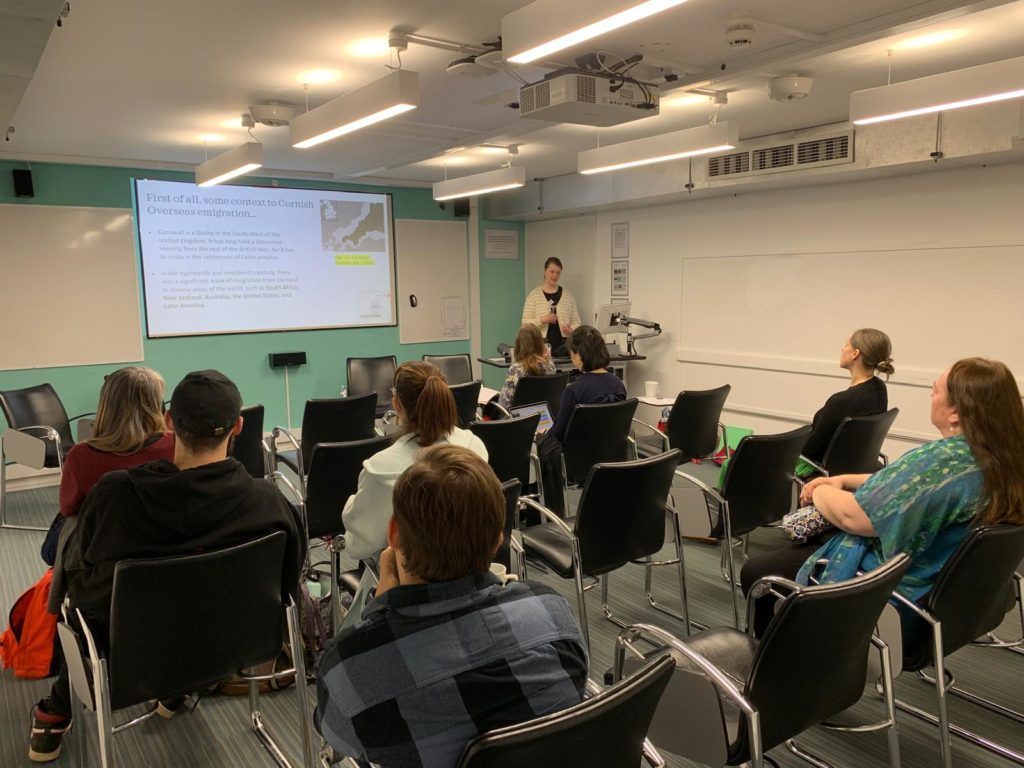

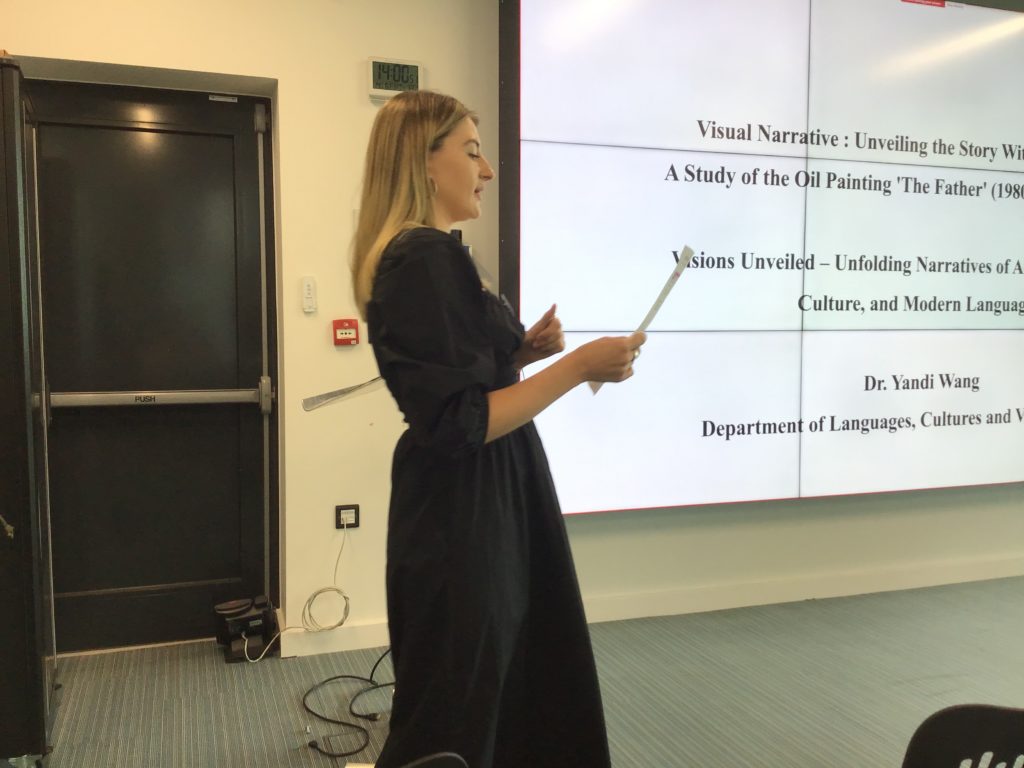
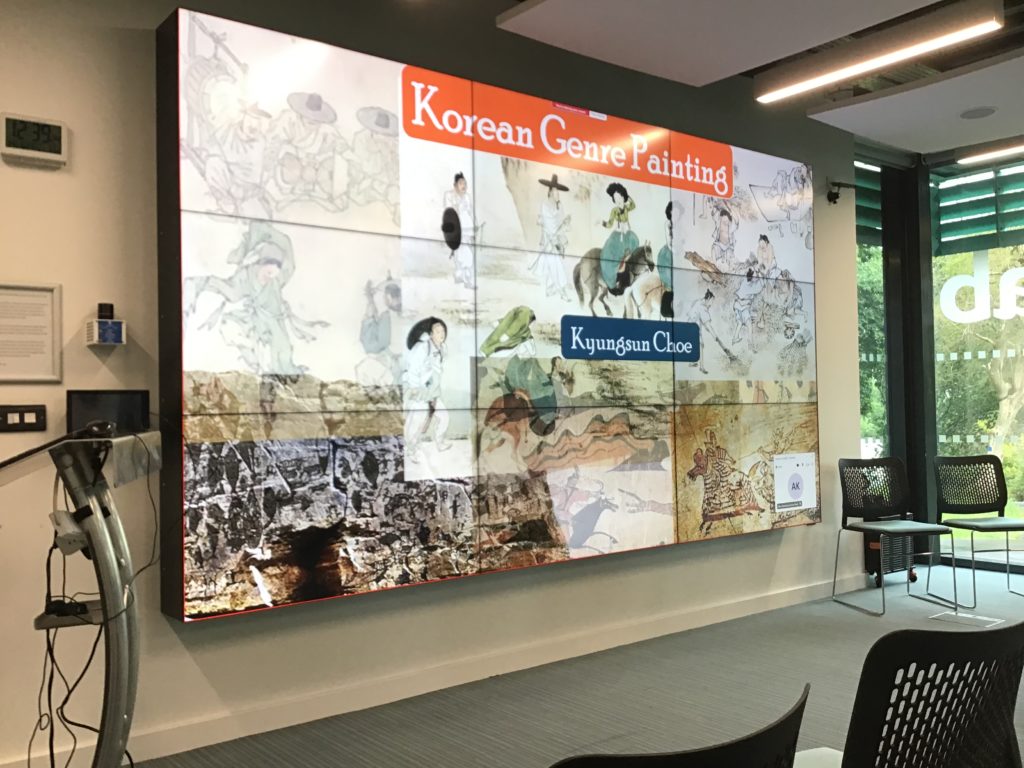
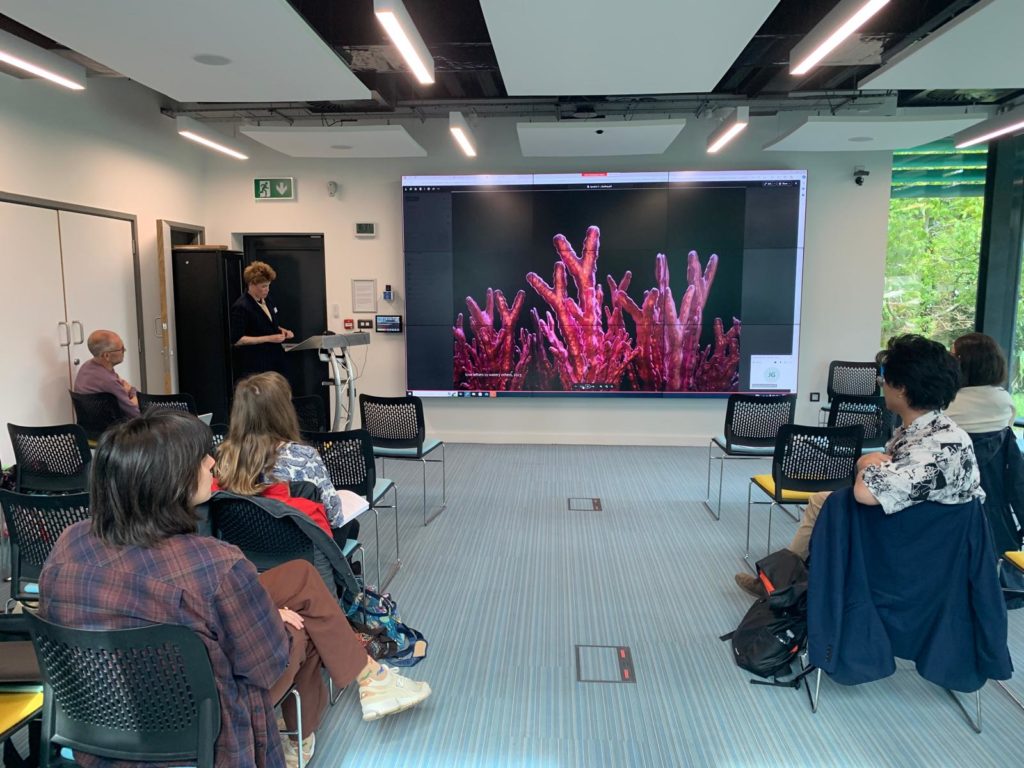
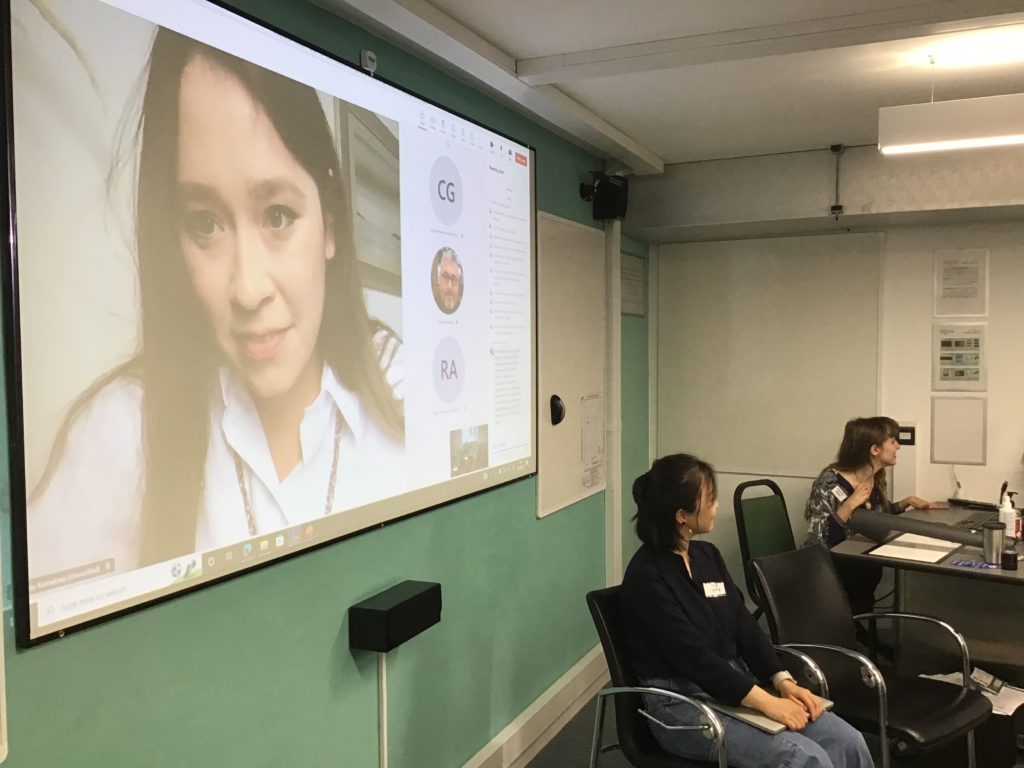
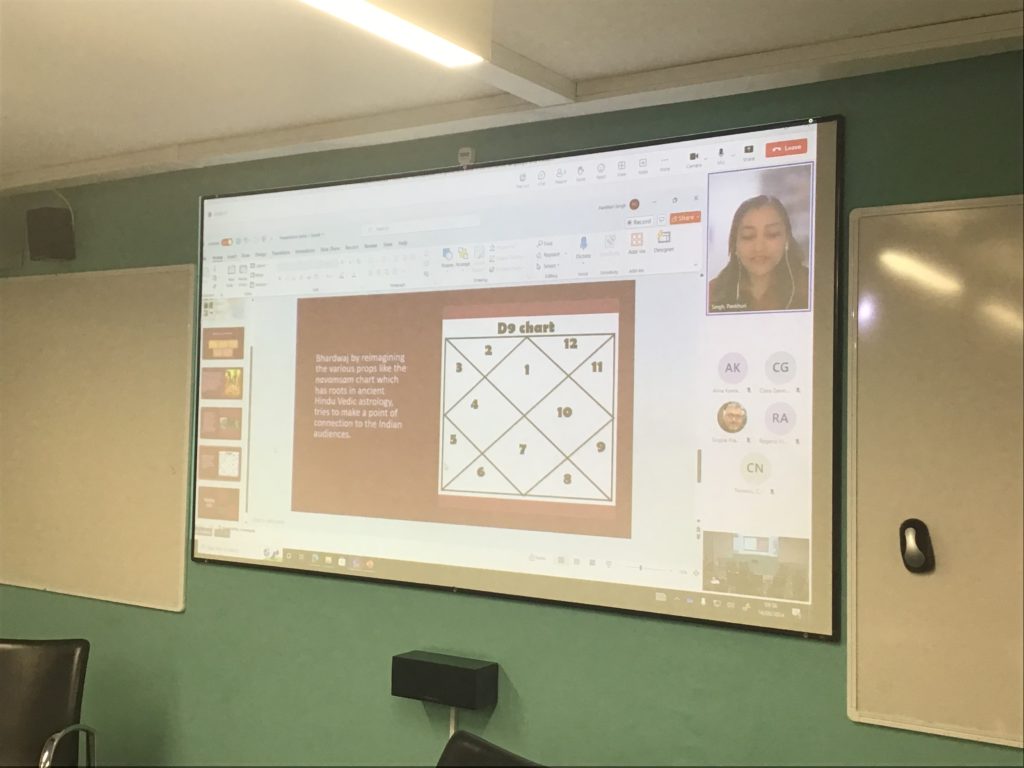
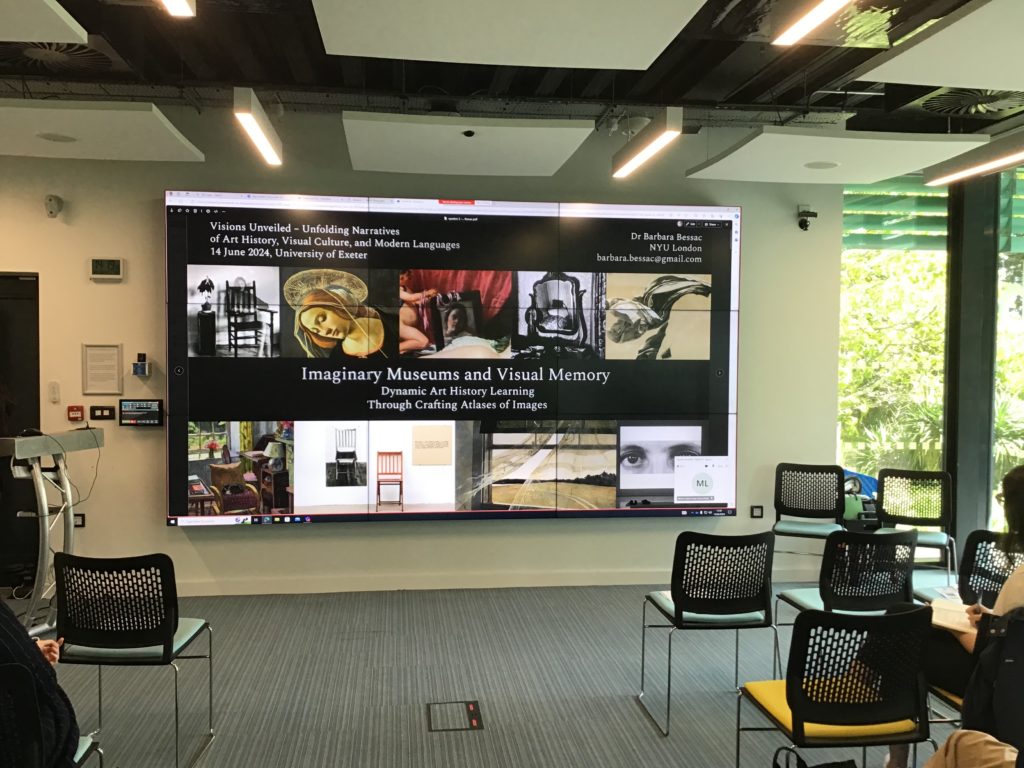
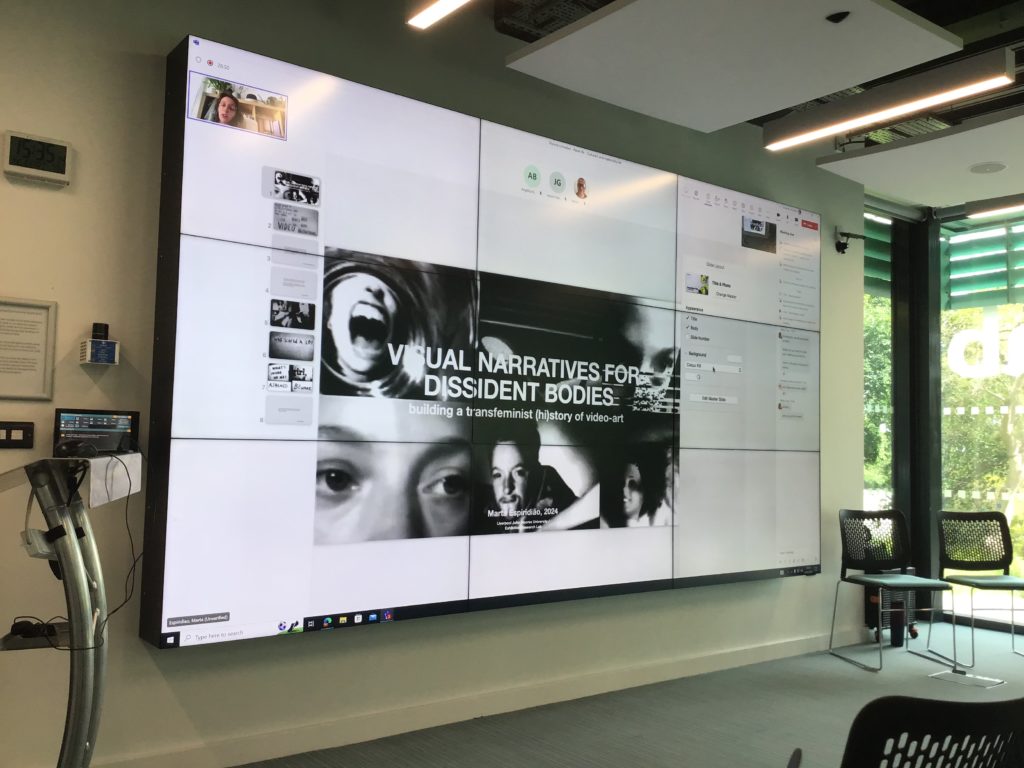
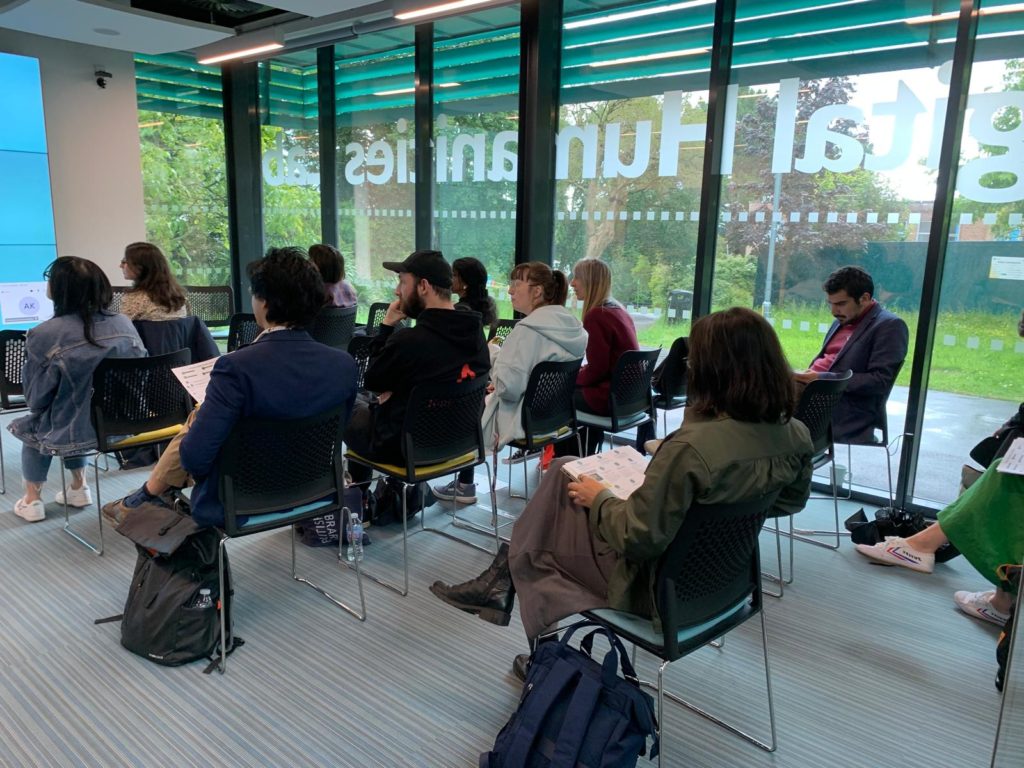
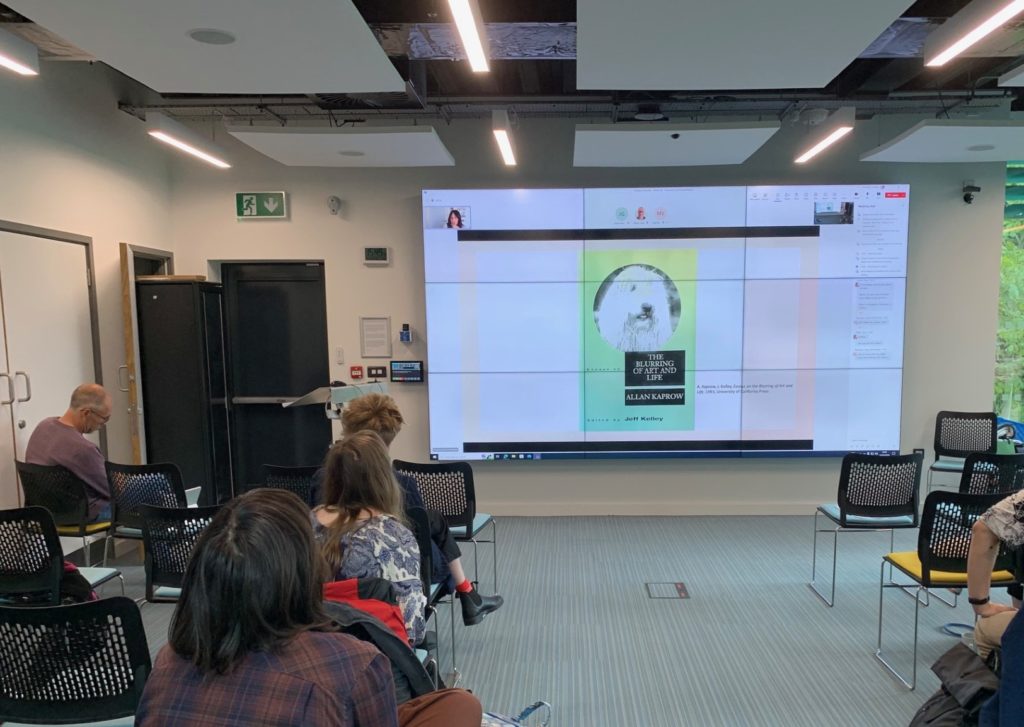
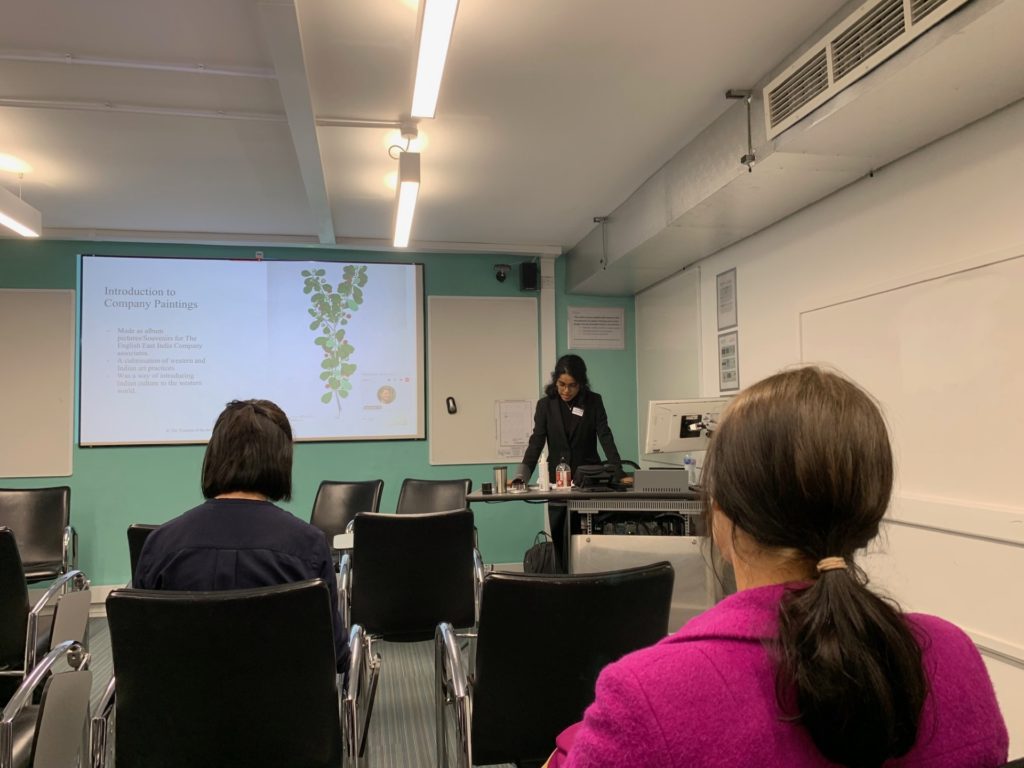
Engaging Networking Among the Raindrops
As the formal sessions concluded, delegates participated in an invigorating walk-and-talk networking event. Despite the rain, participants engaged enthusiastically in discussions while navigating the picturesque campus.
A Culinary Celebration at Isca Eats
The day concluded with a casual group meal for speakers at Isca Eats on campus. This setting provided an excellent opportunity for deeper conversations, reflections on the day’s presentations, and the celebration of shared scholarly achievements.
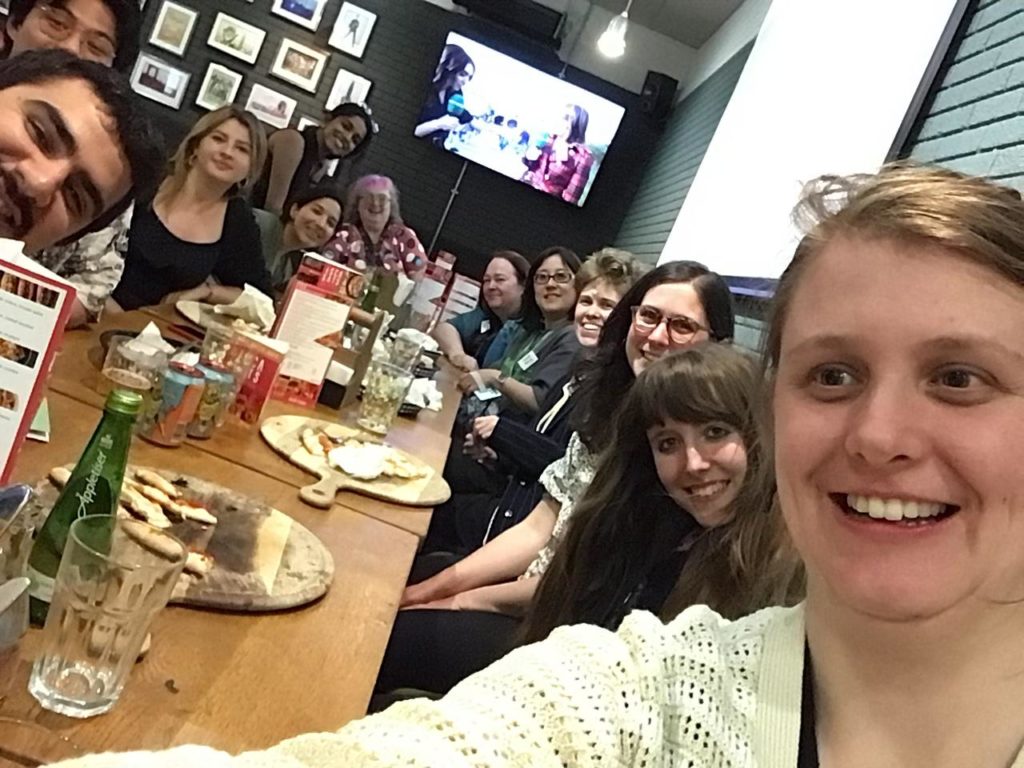
Conclusion: A Stellar Success
Visions Unveiled was an overwhelming success. The day was filled with innovative research, enriching discussions, and the fostering of a dynamic academic community.
Reflecting on the 2024 PGR Conference, the enthusiasm, creativity, and scholarly excellence on display were indicative of the incredible potential within the fields of art history, visual culture, and modern languages. Here’s to many more events that continue to push boundaries, inspire innovation, and unveil the rich tapestry of human narratives.
Conference Co-ordinators
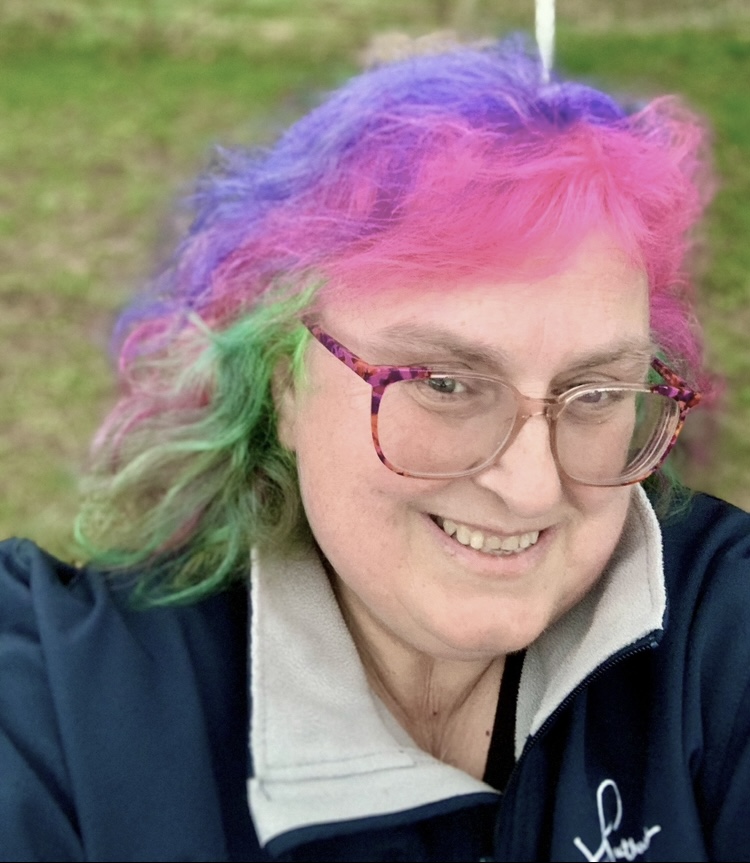
Jo Sutherst
Jo, a part-time distance PhD student from the Forest of Dean, explores how selfies impact identity creation on social media and the narrative techniques artists use to craft their identities. With a background in professional photography, her research builds on her MA project “Fractured Identities.” She also coordinates the PGR Study Space group at Exeter University, fostering a collaborative environment for postgraduate researchers’ advancement.
Katy Humberstone
Katy is a third-year PhD candidate in the Department of Languages, Cultures, and Visual Studies. Her research is kindly supported by the South, West, and Wales Doctoral Partnership. Katy has an academic background in the maintenance and revival of minority languages and cultures. At Exeter, she has taught across Modern Languages, Sociology and Anthropology, and Communication programmes.
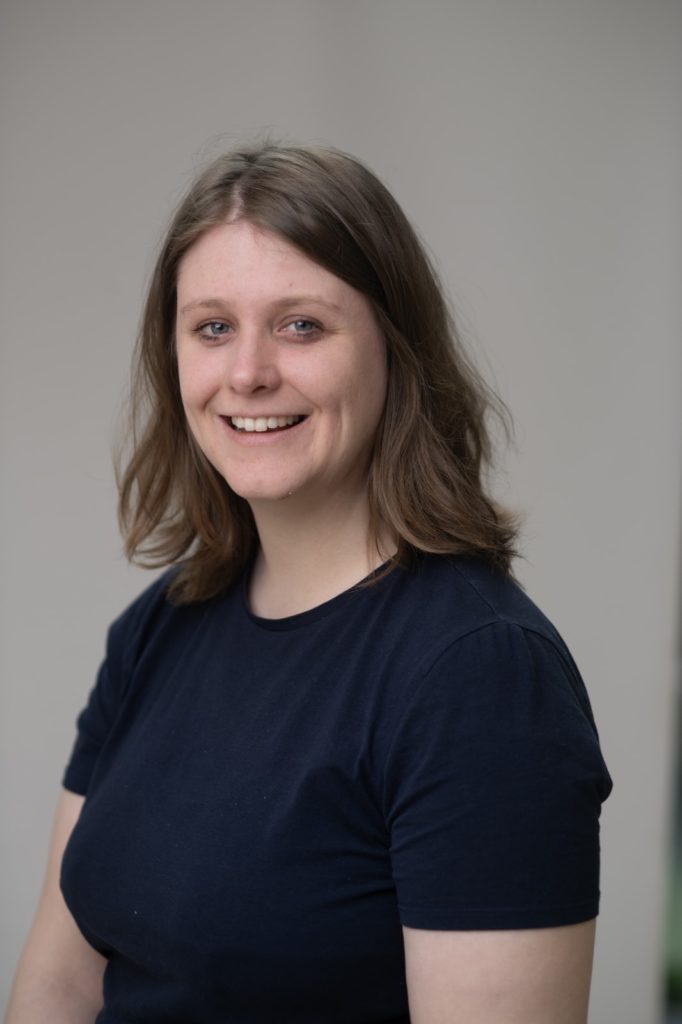
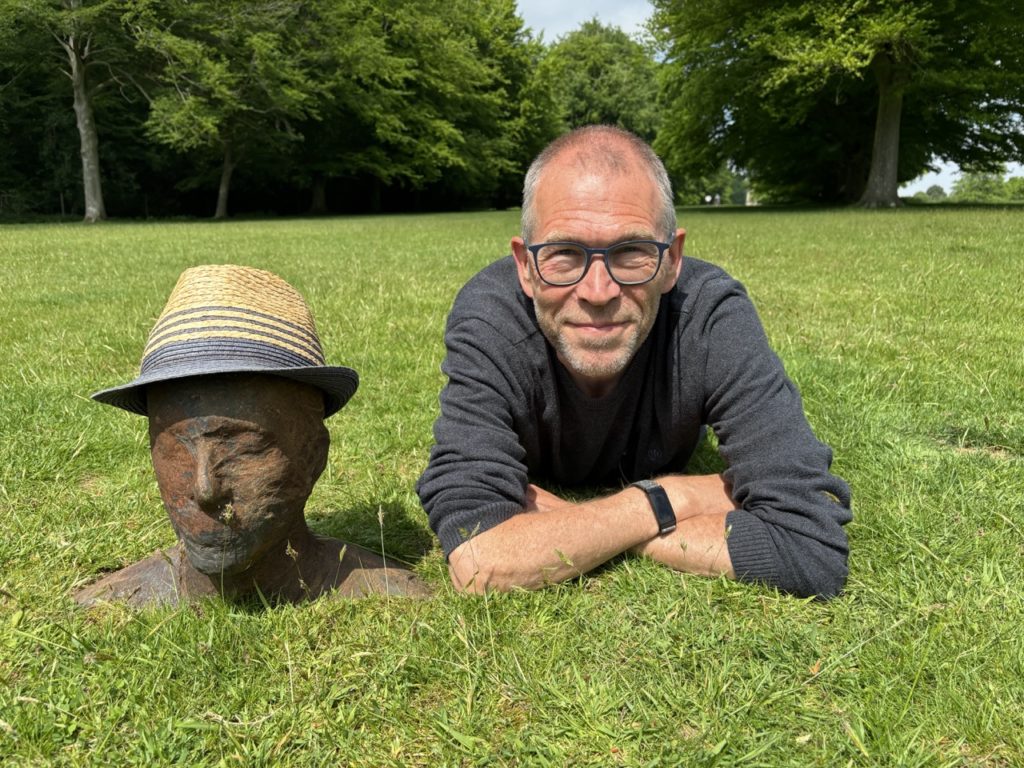
Dave Weller
Dave is in the 3rd year of his PhD in World and Comparative Literature. The title of his thesis is ‘The poet in the poetry of Ida Nappelbaum’. His research interests are the development of Soviet literature and poetry. In addition to Ida Nappelbaum, he is interested in other poets who spent their earliest years in the Sounding Shell studio in Petrograd/St Petersburg in the early 1920s, including Frederika Nappelbaum, Olga Ziv, Vera Lurie, and Konstantin Vaginov.
